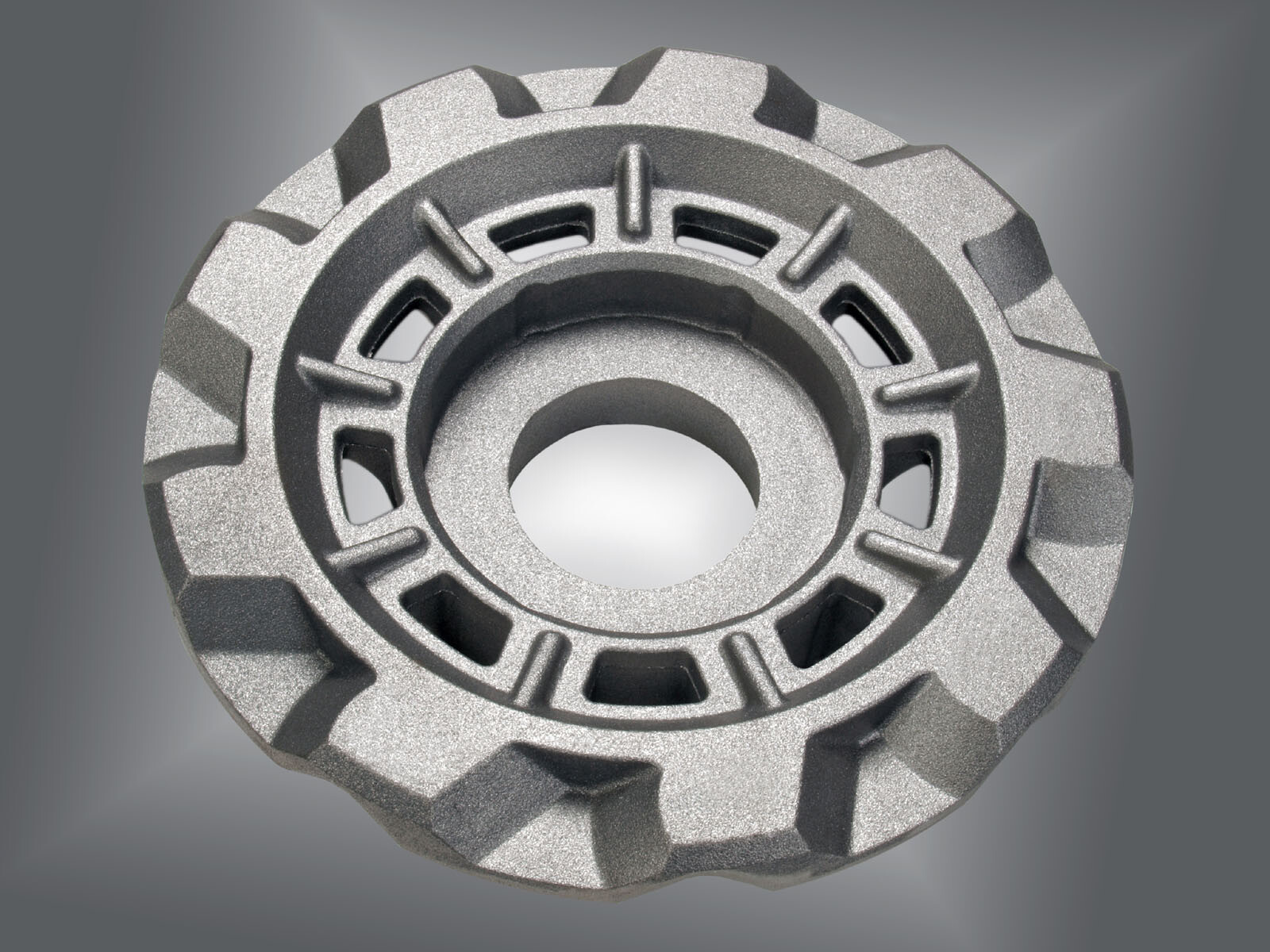SG Cast Iron
Cast iron with spheroidal graphite (EN-GJS) is, according to German Standard (DIN) EN 1563, an iron-carbon cast material; its carbon content is almost entirely present in the form of largely spherical “chunks” embedded in the structural iron matrix.
The letters GJS in the German label stand for Gusswerkstoff (cast material), (J =) Iron, and Spheroidal. For many years, the abbreviations GGG or Sphäroguss (lit: sphere-o-cast) were common in the German-speaking world. In the U.S., the terms Ductile Cast Iron, Nodular Cast Iron and SG (Spheroidal Graphite) Cast Iron are used more or less interchangeably.
There is also a range of variations on the standard SG cast iron, such as Ausferritic Ductile Iron (ADI) as defined by DIN EN 1564, austenitic cast iron (Ni-Resist) as defined by DIN EN 13835, or Silicon-Molybdenum-alloyed cast iron (SiMo).
Principally, the addition of magnesium is required (typically Ni containing a certain portion of magnesium) to obtain the desired nodular form of the graphite. Additional alloying elements “steer” the modification of mechanical properties. The higher the carbon and silicon content, the lower the material’s strength and hardness drop; its strain capability, however, improves.
The properties of cast iron with spheroidal graphite are determined by the type of iron matrix (in contrast to cast iron with flake graphite, in which the notch effect of the lamellar graphite is decisive for the mechanical properties). Matrix structures are differentiated as being ferritic, pearlitic, or mixed-matrix structures containing both. Ferrite provides the foundation of the ductile (weaker) sorts; the stronger types are primarily composed of pearlite, as the mixed-matrix structure of pearlite also contains very strong, hard iron carbides (Fe3C = cementite).
As a rule, the mechanical properties defined in DIN EN 1563 are present in the cast form of the iron. For types that require a guaranteed impact strength, especially for low-temperature applications, additional heat treatment(s) may be necessary. These material types, identified by the additional suffixes RT = Room Temperature and LT = Low Temperature (-20° to -40°C/-4° to -40° F), are defined by their impact strength at low temperatures.

